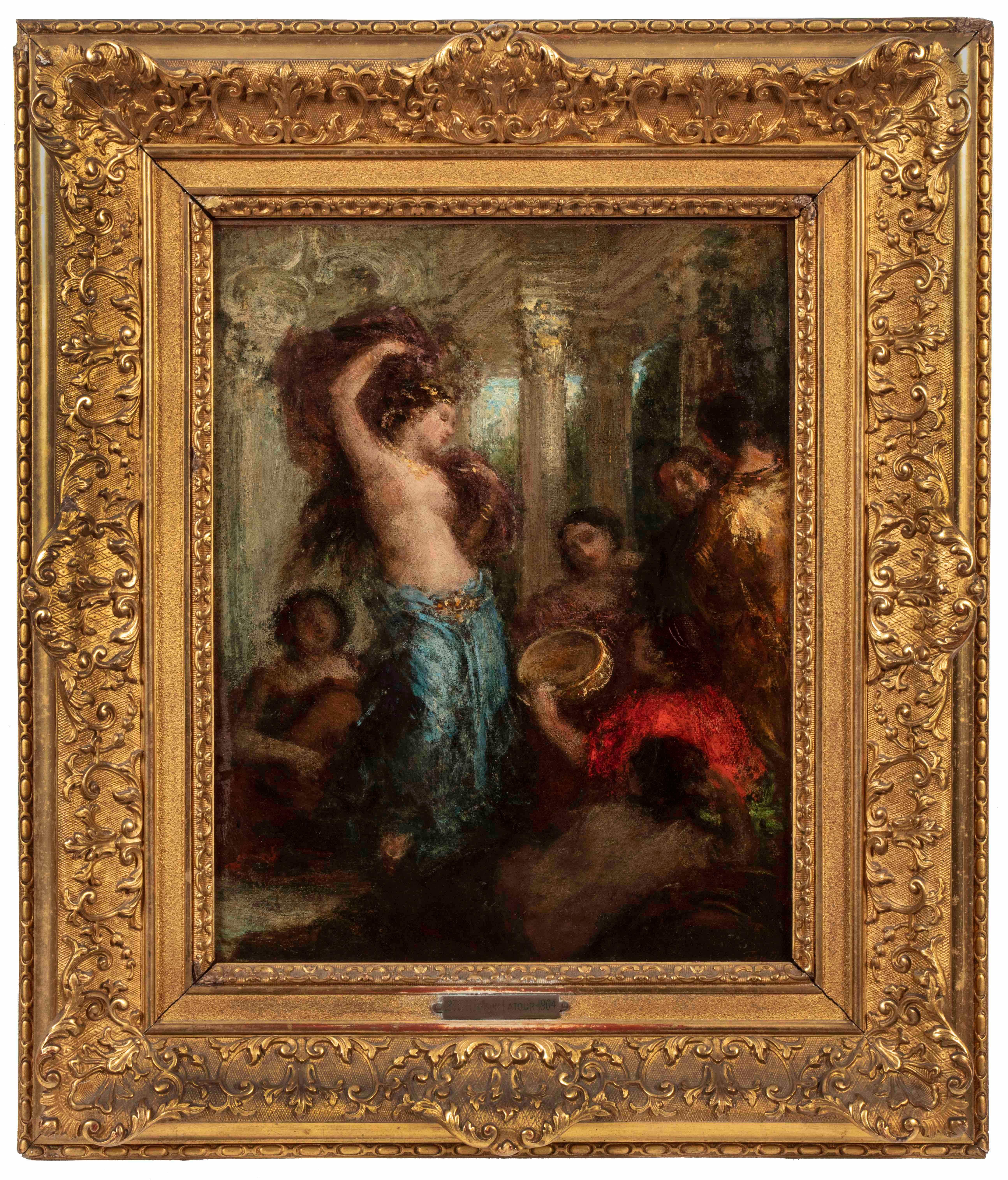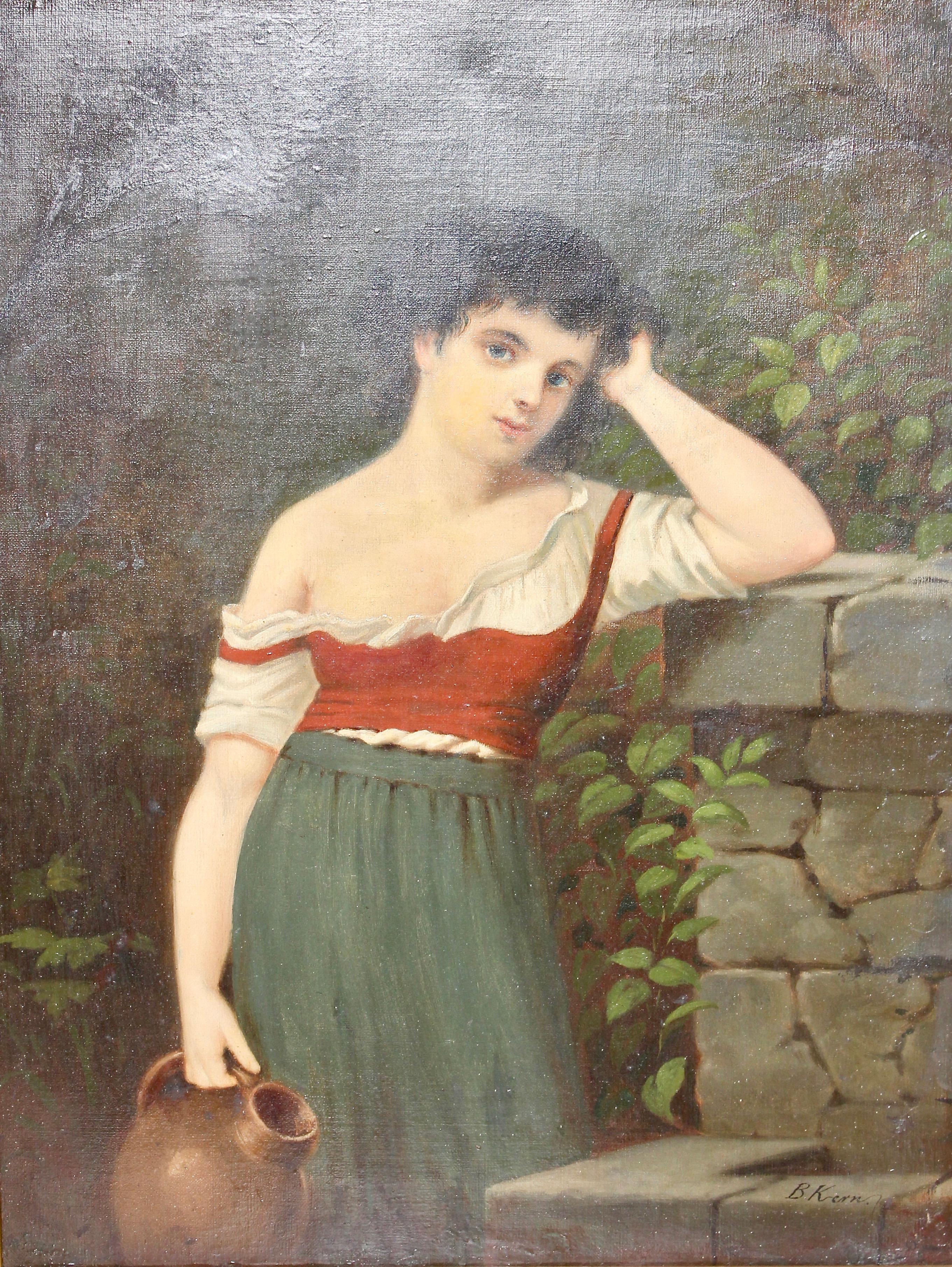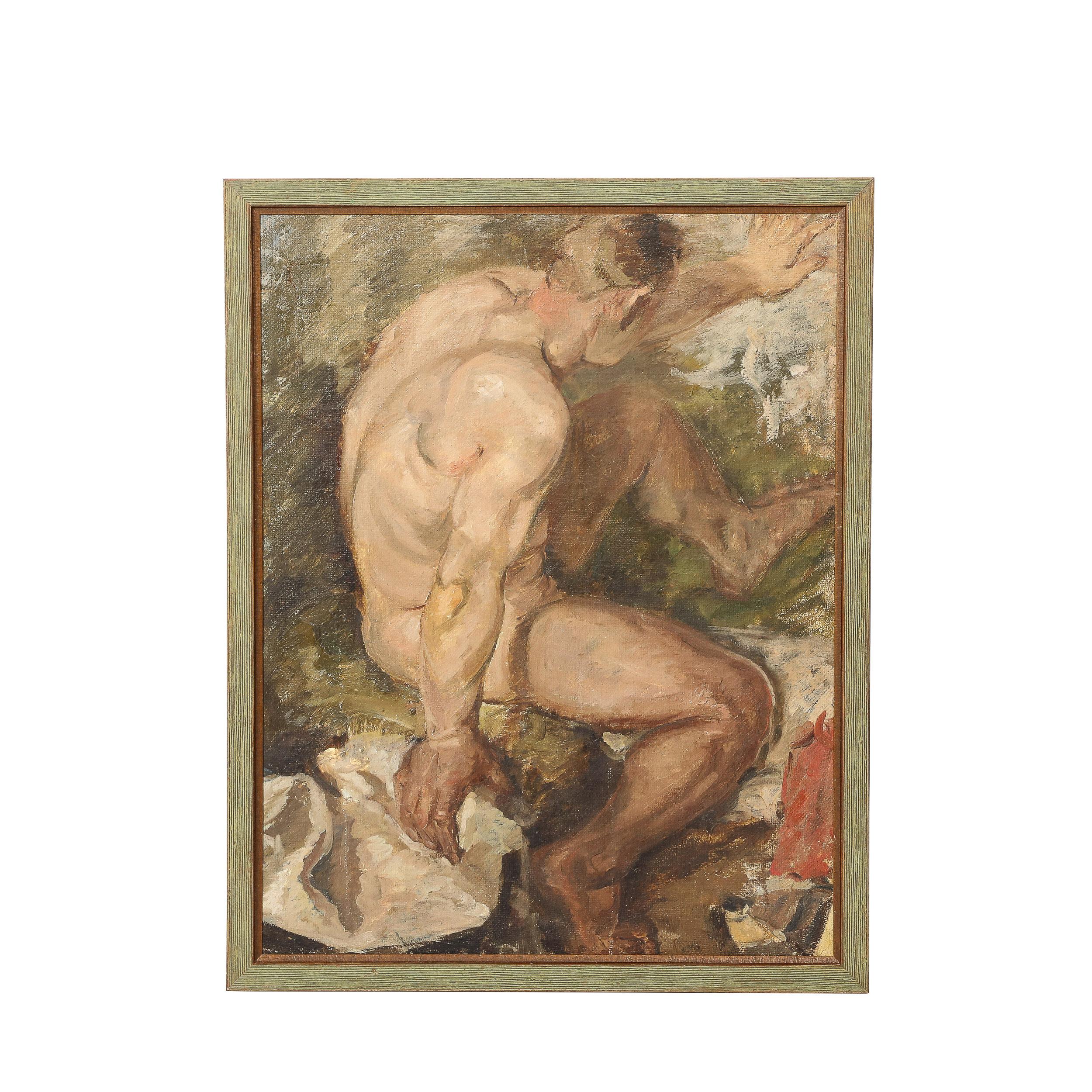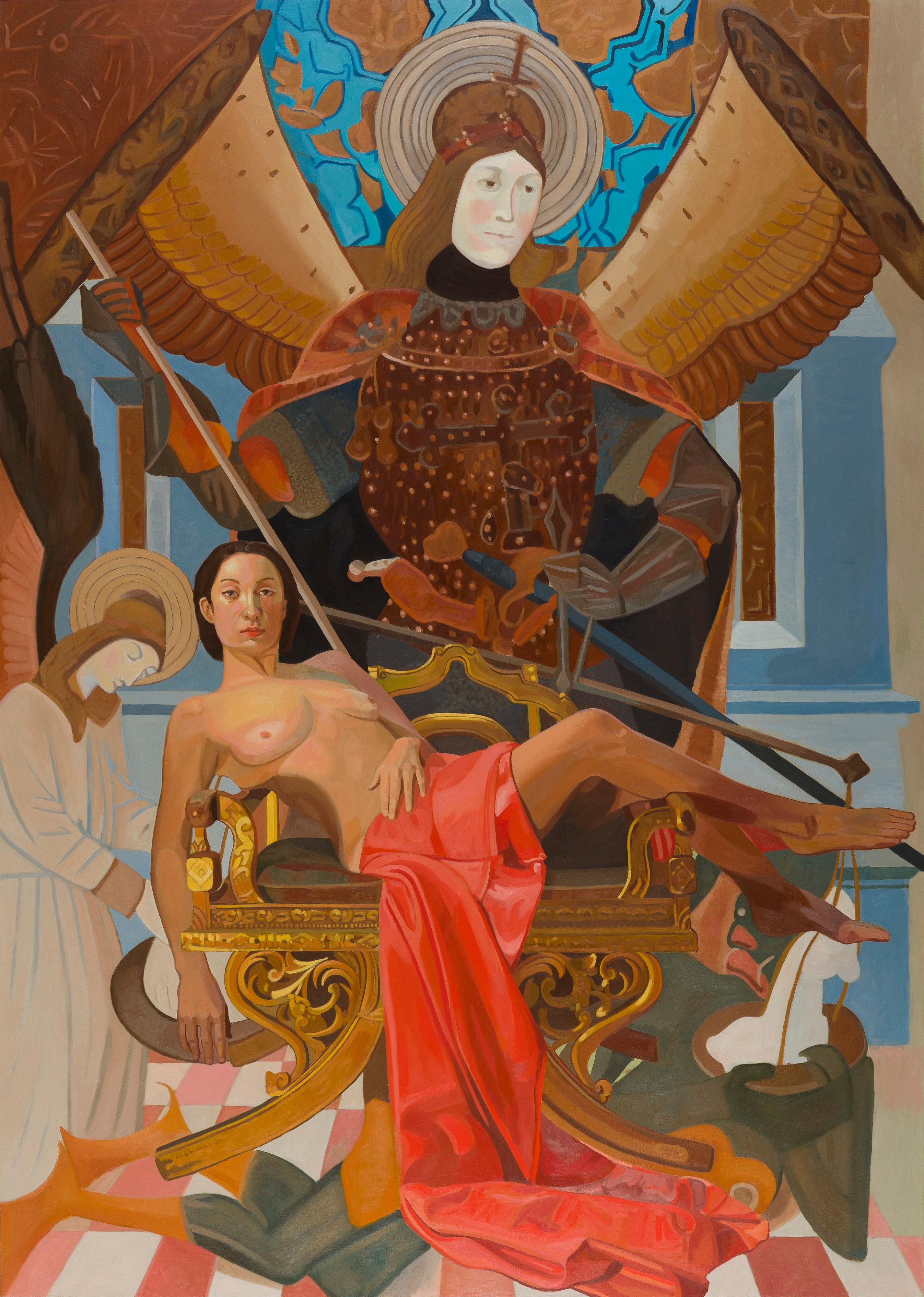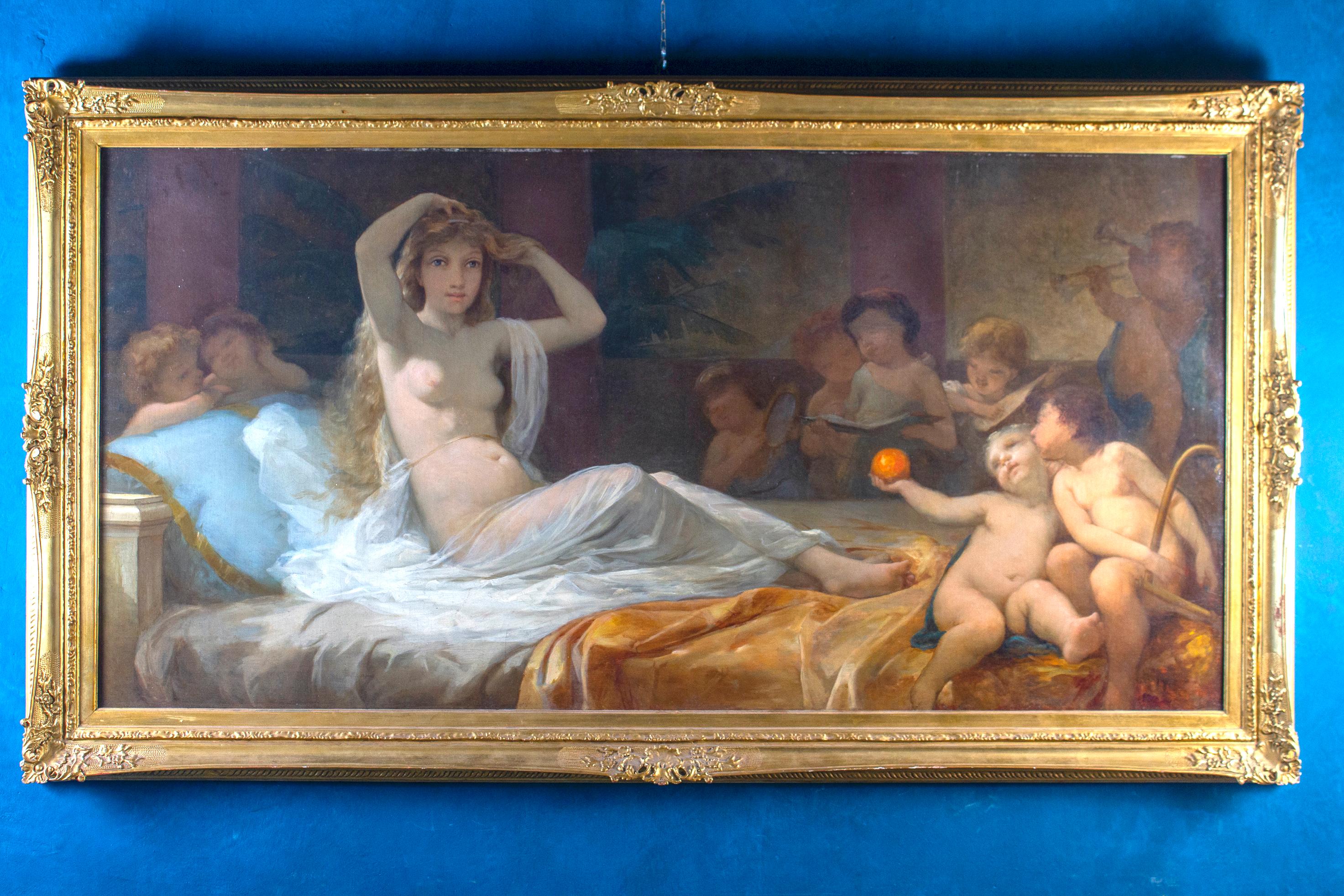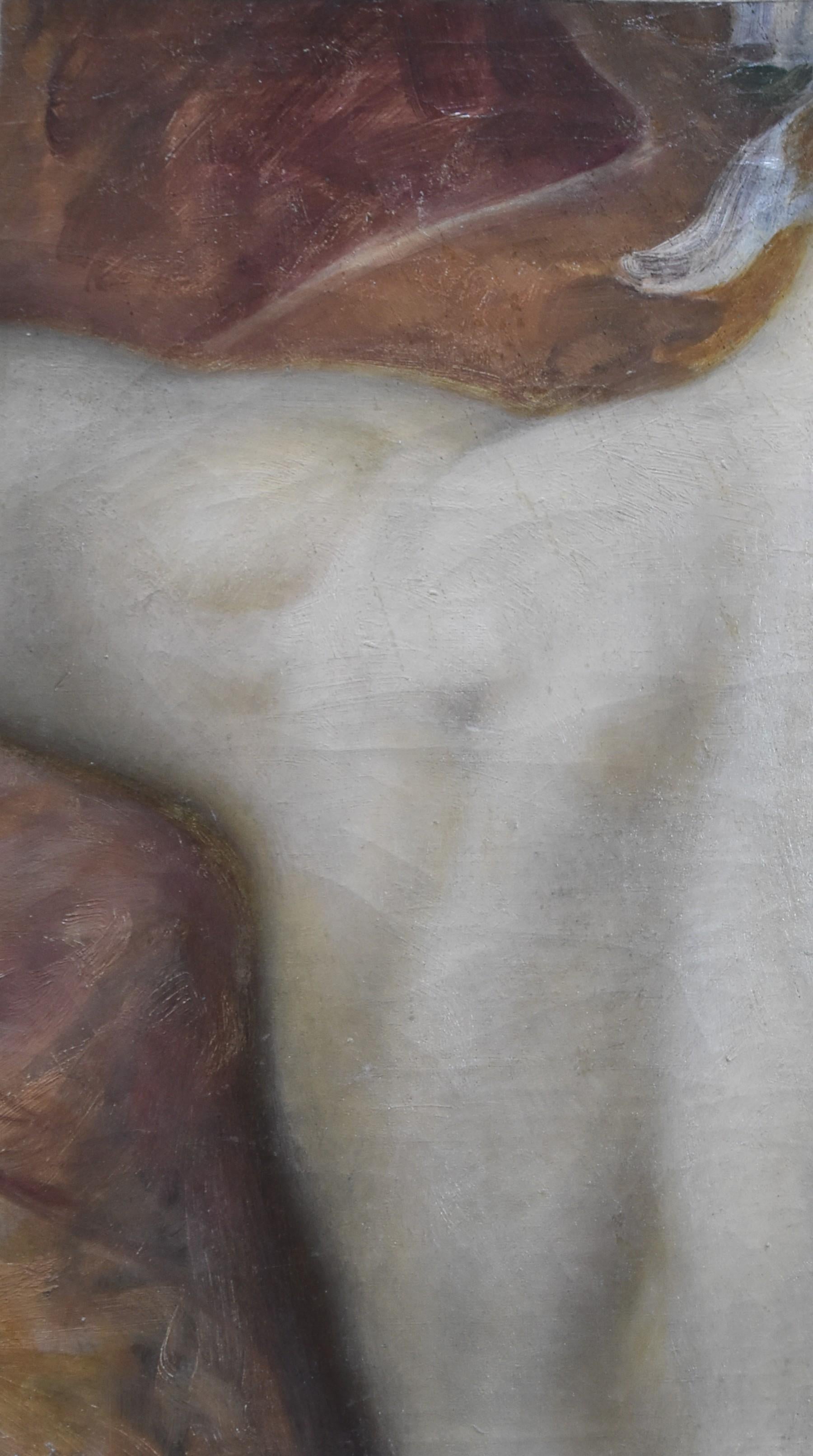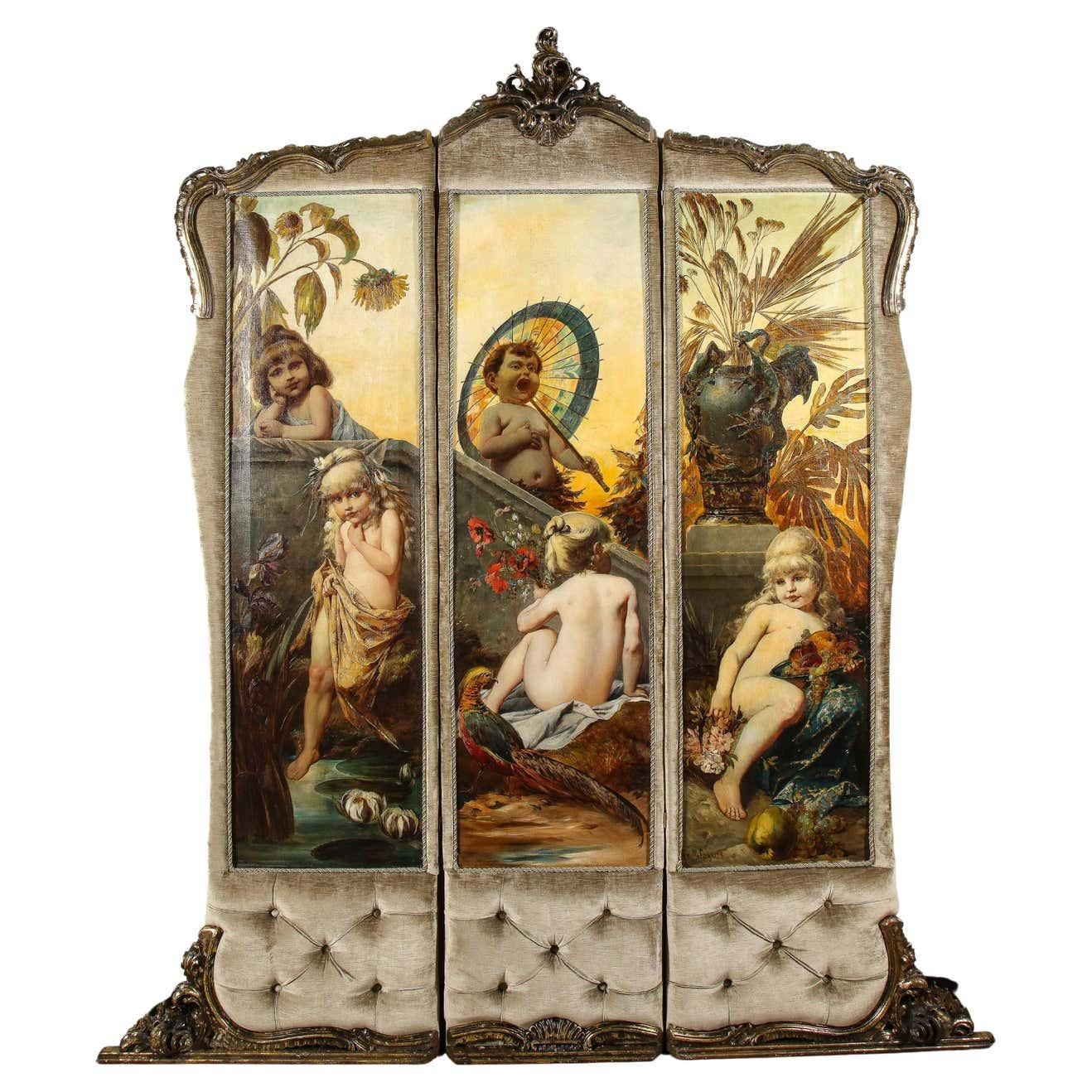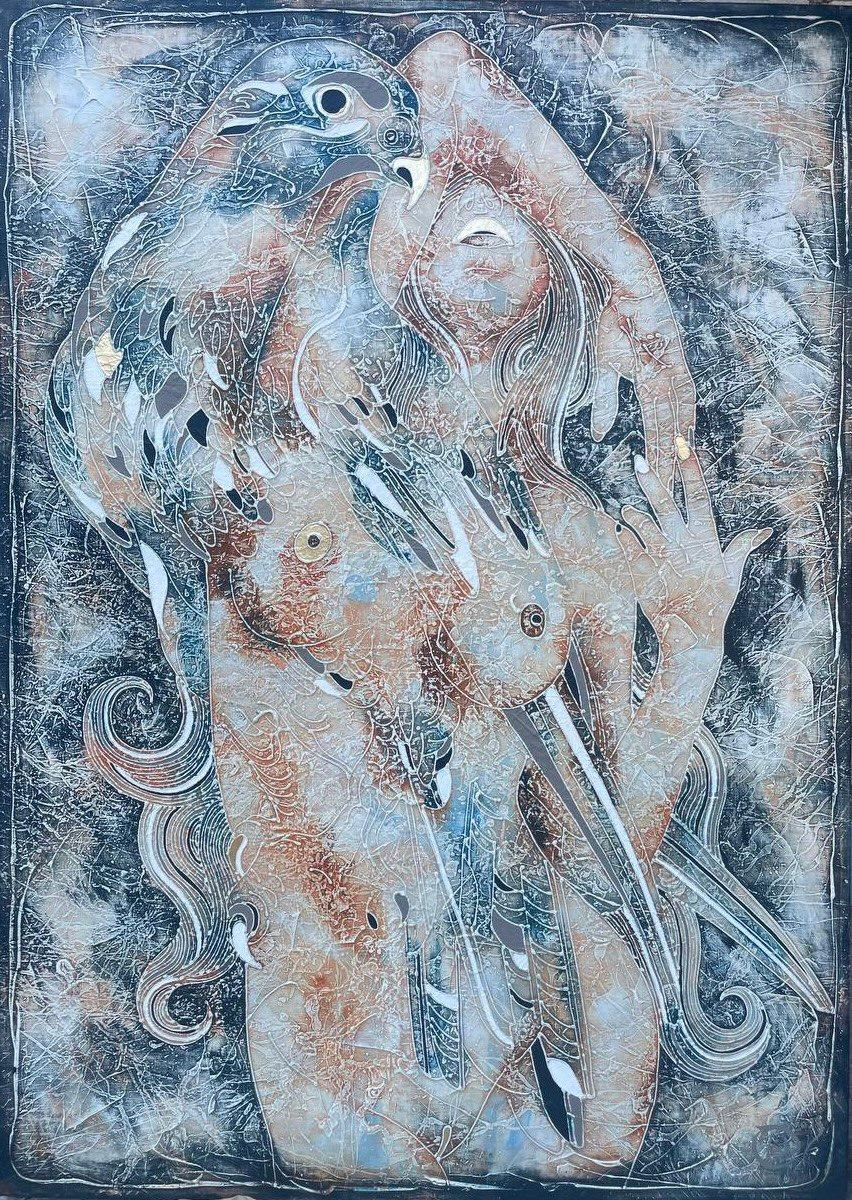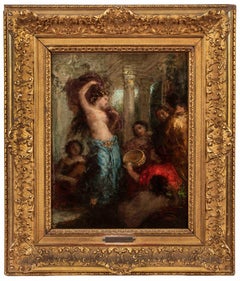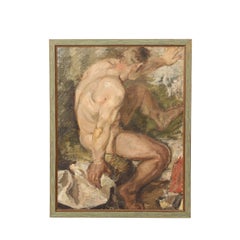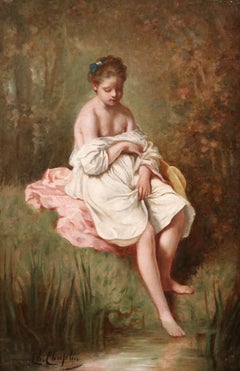
Baigneuse - 19th Century Oil, Nude Figure in River Landscape by Charles Chaplin
View Similar Items
Want more images or videos?
Request additional images or videos from the seller
1 of 12
Charles ChaplinBaigneuse - 19th Century Oil, Nude Figure in River Landscape by Charles Chaplinc.1880
c.1880
About the Item
- Creator:Charles Chaplin (French)
- Creation Year:c.1880
- Dimensions:Height: 16 in (40.64 cm)Width: 11 in (27.94 cm)
- Medium:
- Movement & Style:
- Period:
- Condition:Very good condition.
- Gallery Location:Marlow, GB
- Reference Number:Seller: LFA07091stDibs: LU41534657742
About the Seller
5.0
Platinum Seller
These expertly vetted sellers are 1stDibs' most experienced sellers and are rated highest by our customers.
Established in 2001
1stDibs seller since 2016
668 sales on 1stDibs
Typical response time: 3 hours
More From This SellerView All
- Fairest Rose - French Academic Nude Oil Painting by Delphin EnjolrasBy Delphin EnjolrasLocated in Marlow, BuckinghamshireSigned nude in interior oil on canvas circa 1900 by French academic painter Delphin Enjolras. The piece depicts a red-haired nude resting on a bed in a lush boudoir with a sheer scar...Category
Early 20th Century Academic Nude Paintings
MaterialsCanvas, Oil
- Nu avec des fleurs - Post-Impressionist Oil, Nude & Flowers - Georges D'EspagnatBy Georges d'EspagnatLocated in Marlow, BuckinghamshireSigned nude oil on original canvas circa 1910 by French post impressionist painter Georges D'espagnat. The work depict a nude woman seated on a stall turned away from the artist. Paintings hang on the wall and there's a vase filled with pink and red flowers on the wooden mantlepiece beside her. Signature: Signed upper left Dimensions: Framed: 30"x26" Unframed: 22"x18" Provenance: Private French collection. Exhibition stamp verso From the beginning of his career, it was a constant concern of Georges d'Espagnet to assert his originality. His studies at the École des Arts Décoratifs, Paris, did not last very long, for he wanted immediate independence and decided to follow courses in the private academies of Montparnasse. In about 1900, he became acquainted with Maurice Denis, Bonnard and Vuillard, and his collaboration with Denis led to a renewal of religious art in France. In 1903, d'Espagnet was one of the founders of the Salon d'Automne, and was appointed professor in charge of studios at the École des Beaux-Arts, Paris, in 1934. He illustrated a number of books: Rémy de Gourmont's Evil Prayers ( Oraisons mauvaises) (1896), The Saints of Paradise ( Les Saintes du paradis) (1898), Simone (1907), Sistine ( Sixtine) (1922); Alphonse Daudet's The Immortal ( L'Immortel) (1930); André Gide's The Pastoral Symphony ( La Symphonie pastorale); Francis Jammes' Clearings in the Sky ( Chairières dans le ciel) (1948). D'Espagnet belongs to the group of artists who made the Courrier Français so successful. The drawings of his which are published in it are strongly expressive and some bear comparison with the designs of the great Renaissance masters. He also contributed to L'Image. He often placed cheerful nudes in a landscape, reminding us that, though he moved away from the Fauves, he retained their freedom of colour and arabesque. He painted many portraits, including those of Albert André, André Barbier...Category
1910s Post-Impressionist Nude Paintings
MaterialsCanvas, Oil
- Baigneuse a Trouville - Cubist Oil, Nudes in Landscape by Camille HilaireBy Camille HilaireLocated in Marlow, BuckinghamshireSigned oil on canvas of figures in a landscape by French cubist painter Camile Hilaire. The piece beautifully depicts three nude bathers - two blonde and one brunette - resting on th...Category
1970s Cubist Nude Paintings
MaterialsCanvas, Oil
- Nu avec des fleurs - Post-Impressionist Oil, Nude & Flowers - Georges D'EspagnatBy Georges d'EspagnatLocated in Marlow, BuckinghamshireA beautiful oil on original canvas circa 1910 by French post impressionist painter Georges D'Espagnat. The work depicats a nude woman in a yellow shawl standing by a blue vase filled with pink, red and white flowers. Signature: Signed lower right Dimensions: Framed: 28"x20" Unframed: 21"x13" Provenance: Doyle New York - May 2003 From the beginning of his career, it was a constant concern of Georges d'Espagnet to assert his originality. His studies at the École des Arts Décoratifs, Paris, did not last very long, for he wanted immediate independence and decided to follow courses in the private academies of Montparnasse. In about 1900, he became acquainted with Maurice Denis, Bonnard and Vuillard, and his collaboration with Denis led to a renewal of religious art in France. In 1903, d'Espagnet was one of the founders of the Salon d'Automne, and was appointed professor in charge of studios at the École des Beaux-Arts, Paris, in 1934. He illustrated a number of books: Rémy de Gourmont's Evil Prayers ( Oraisons mauvaises) (1896), The Saints of Paradise ( Les Saintes du paradis) (1898), Simone (1907), Sistine ( Sixtine) (1922); Alphonse Daudet's The Immortal ( L'Immortel) (1930); André Gide's The Pastoral Symphony ( La Symphonie pastorale); Francis Jammes' Clearings in the Sky ( Chairières dans le ciel) (1948). D'Espagnet belongs to the group of artists who made the Courrier Français so successful. The drawings of his which are published in it are strongly expressive and some bear comparison with the designs of the great Renaissance masters. He also contributed to L'Image. He often placed cheerful nudes in a landscape, reminding us that, though he moved away from the Fauves, he retained their freedom of colour and arabesque. He painted many portraits, including those of Albert André, André Barbier, Victor Boucher, Déodat de Séverac, Albert Marque...Category
1910s Post-Impressionist Nude Paintings
MaterialsCanvas, Oil
- Le Coucher - Post Impressionist Nude in Interior Oil Painting by Pierre de BelayBy Pierre de BelayLocated in Marlow, BuckinghamshireSigned and dated nude figure in interior oil on canvas by French post impressionist painter Pierre De Belay. This work depicts a painting of Pierre De Belay's wife - Helene. Here she...Category
1940s Post-Impressionist Nude Paintings
MaterialsOil, Canvas
- Nu assis sur une chaise, Modernist Oil, Nude in Interior by Maurice BrianchonBy Maurice BrianchonLocated in Marlow, BuckinghamshireWonderful oil on canvas circa 1960 by French modernist painter Maurice Brianchon. The work depicts a blonde-haired nude seated on a wooden chair turned away from the artist with her chin resting in her hand. Signature: Signed lower left Dimensions: Framed: 38"x33" Unframed: 29"x24" Provenance: Fondation de L'Hermitage (Lausanne) - Exhibition Maurice Brianchon 13th October 1989 - 28th January 1990 As a young man, Maurice Brianchon studied at school in Le Mans before joining the École des Beaux-Arts in Bordeaux. He went on to study at the École des Arts Décoratifs in Paris, remaining there from 1917 to 1923 and working under the direction of Eugène Morand. It was here that he met and became friends with Oudot and Legueult. When he exhibited for the first time at the Salon d'Automne he was immediately elected as a member. He received the Blumenthal Award in 1924 and the Carnegie Prize in 1939. He was a founder member of the Salon des Tuileries and was appointed to serve on the committee in 1941. He also exhibited at the Salon de la Société Nationale des Beaux-Arts in Paris. He took part in major exhibitions abroad, including the Venice Triennale, Antwerp, Rio de Janeiro, New York, Madrid, Brussels and Stockholm. He soon made his mark as a decorative artist, creating stage sets for the Opéra for a production of Griséldis (1922) in collaboration with Legueult, and for Noble and Sentimental Waltzes ( Valses Nobles et Sentimentales) (1938), Sylvia (1941) and The Model Animals ( Les Animaux Modèles) (1944). He created a large, decorative piece entitled Symphony at the Palais de Chaillot, where he worked with Chapelain-Midy, Planson and Oudot. He also decorated the Lycée Janson-de-Sailly with murals. With his wife Marguerite Louppe he produced three large panels commissioned by the state in 1942 for the Conservatoire. The Gobelins and Aubusson tapestry works produced tapestries after his cartoons. He also produced cartoons for...Category
Mid-20th Century Modern Nude Paintings
MaterialsCanvas, Oil
You May Also Like
- OrientaleBy Henri Fantin-LatourLocated in New York, NYSigned, lower right: Fantin Provenance: Gustave Tempelaere (1840–1904), Paris; possibly by descent to his son: Julien Tempelaere (1876–1961) and with F. & J. Tempelaere, Paris, prob...Category
1890s Romantic Figurative Paintings
MaterialsCanvas, Paper, Oil
- Painting, 19th century, oil on canvas, "Young woman at the well"Located in Berlin, DEPainting, 19th century, oil on canvas, "Young woman at the well" Signed, B. Kern. Dimensions with frame 61cm x 75cmCategory
19th Century Romantic Figurative Paintings
MaterialsCanvas, Oil
$2,387 Sale Price21% OffFree Shipping - Romanticist Oil on Burlap Painting of a Nude Male Figure Bathing in a RiverLocated in New York, NYThis elegant romanticist oil on burlap painting was realized by an unheralded master during the first part of the 20th century. Realized in tight, yet expressionistic brush strokes, the painting depicts a nude male figure in the foreground with his back turned towards the viewer. The man has one knee raised (perhaps grounded on a boulder) and an arm extended into the abstract background whose frenetic white stroked and blocks of mossy greens suggests a frothing river. He sits on a large river stone in a rich olive hue clutching a white towel in his right hand that supports the weight of his body. The figure's torqued position serves to highlight his muscular physique- whose ideal proportions recalls classical Greek sculpture. In the bottom right portion of the composition, there is an abstracted form in a sumptuous brick red that offers an understated pop of color that provides a dynamic contrast to the flesh tones, organic greens and flaxen hues of the figure's hair. Masterfully painted in a sophisticated palate, this painting would be a winning addition to any style of interior from traditional to contemporary, and is sure to be appreciated by connoisseurs of classical art and homoerotic art...Category
Early 20th Century Romantic Nude Paintings
MaterialsBurlap, Oil
- Dreamer (Mid-Century Impressionist European Nude Man Portrait Painting)Located in New Orleans, LAA beautiful painting I acquired when I was buying things from Russia and Ukraine maybe 7 or 8 years ago. It's painted on very heavy cardboard, as I'd say the majority from the Soviet...Category
Mid-20th Century Romantic Figurative Paintings
MaterialsOil
$1,200 Sale Price20% Off - Gilded ChairBy Thomas DarsneyLocated in Boston, MAAn auto-didactic artist, Darsney draws inspiration from a variety of sources, including The Boston School and iconic masters such as Vermeer, Rembrandt, and Degas. These artists’ att...Category
2010s Romantic Nude Paintings
MaterialsOil
- Diptych “The Cries of Fire”; “The Voices of the Stream”Located in Roma, RMArtist: Eugenio Agneni Title: Diptych “The Cries of Fire”; “The Voices of the Stream”, c. 1865-71. Medium: oil on canvas mounted on wood, cm 128 x 60 each Signature: Signed at the bottom on the base of the frames provenance: Marquis Corsi Salviati; Rome, private collection The two canvases mounted on wooden supports are clearly attributable to Eugenio Agneni (Sutri, 1816 - Rome, 1879), a paradigmatic figure of an Italian painter of the Risorgimento years who combined a successful and continuous international artistic activity with an intense political and military activity, starting from the Roman effervescence following the election of Pius IX to the Mentana expedition and then in the early years of Rome as capital city, a period in which he held various administrative posts. The clarity of attribution of the works derives not only from the large central inscription inserted in the elaborate neo-Gothic scenic layout that encloses the two works in a diptych, but also from the direct kinship that links them to the cycle of frescoes painted between 1865 and 1868 for Marquis Antonio Maria Corsi Salviati in the reception hall of the family villa in Sesto Fiorentino. Agneni resided more or less permanently in the Florentine area between 1863 and 1871 after a phase of European-wide wanderings that began at the end of the Roman republican experience of 1849, in which he was involved to the point of having to hide for some time from July of that year at the home of Marquis Salviati, whom he therefore already knew before his subsequent move to Florence. The need to stay away from Italy, as well as his connections with Mazzinian exiles and evidently also a proven ability to reinvent himself in different cultural spheres allowed Agneni to profitably frequent the artistic scenes of London and Paris, cities in which he lived and worked, obtaining commissions of absolute importance (he decorated several rooms at Buckingham Palace, the Covent Garden Opera and the Louvre), and presenting his works at the Royal Academy in London. Therefore, if we are to keep faith with the remarks of his friend Luigi Calamatta ("you are full of money...Category
1860s Romantic Figurative Paintings
MaterialsOil
